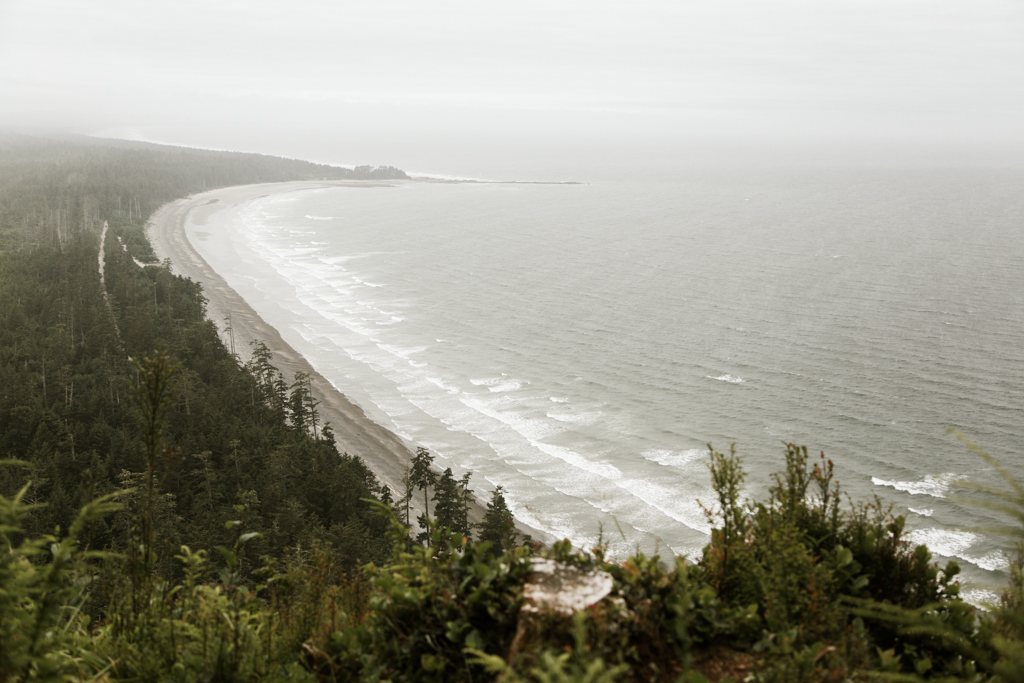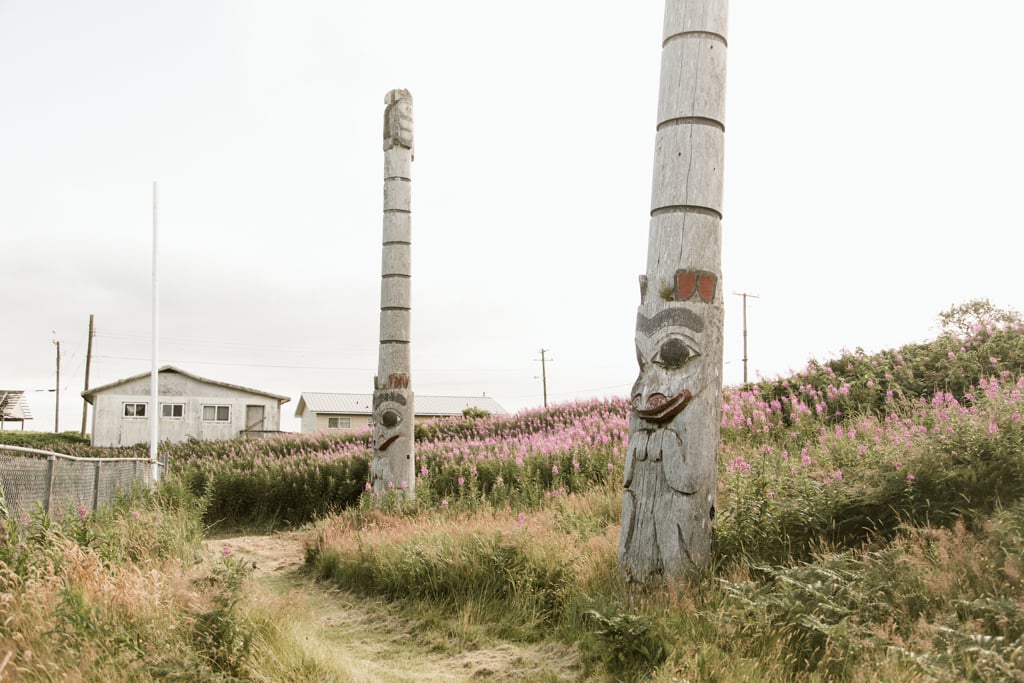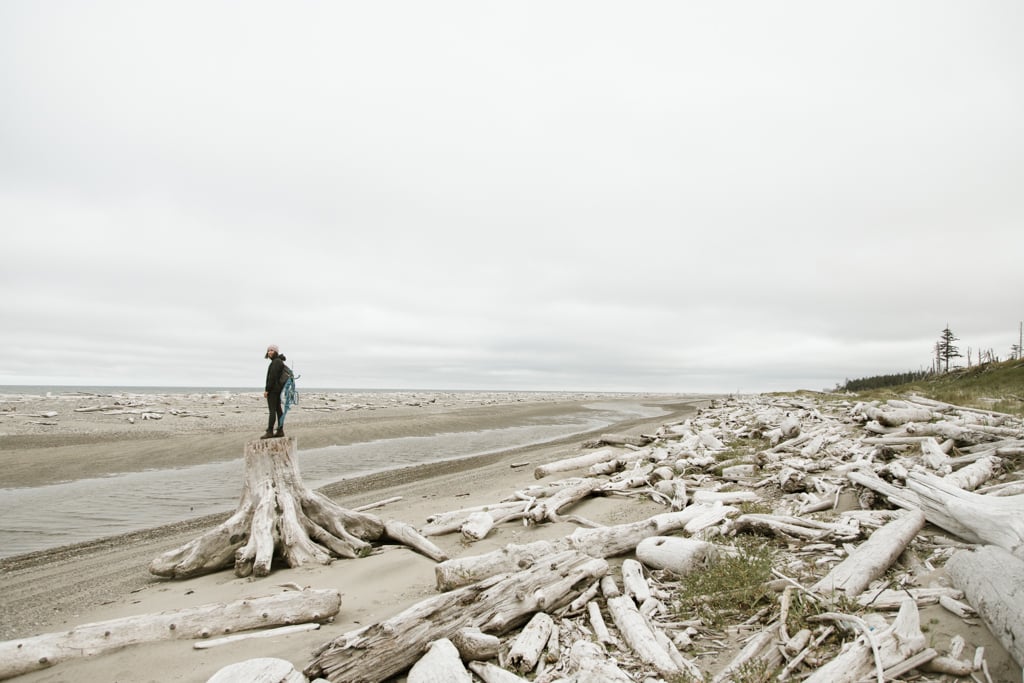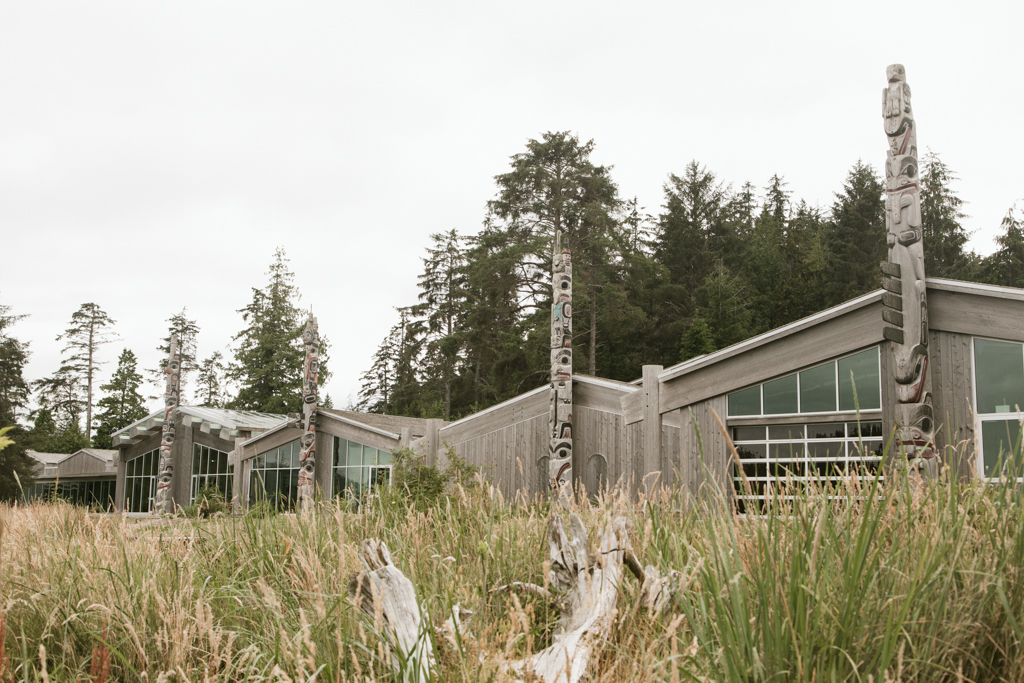Travel update for summer, 2021: As of July 1, 2021, Haida Gwaii is open for recreational travel. Before arriving on the islands, visitors are strongly encouraged to take the Haida Gwaii Pledge and learn how to travel to Haida Gwaii respectfully. Visitors are also strongly encouraged to arrive fully vaccinated.
Haida Gwaii is a remote, beautiful, and wild chain of islands off the northern coast of British Columbia. The remoteness is part of its appeal: sprawling beaches, forests dense with growth and shaded by giant trees, and an abundance of wildlife, surrounded on all sides by the Pacific ocean. The Haida people call these islands home, and their history and culture is entangled in its incredible natural bounty and beauty.
While Haida Gwaii is an eight-hour ferry ride from Prince Rupert (and that’s in good weather!), it’s only a few hours by plane from Vancouver International Airport to Masset. It’s easy to spend a week here, exploring everything these islands have to offer. Here are a few suggestions.

The view of Agate Beach from Tow Hill in Naikoon Provincial Park.
Hit the Hiking Trails
In Naikoon Provincial Park, the Tow Hill trail brings hikers to breathtaking views. A different vantage point of the dramatic volcanic cliff can be found below on the Blow Hole trail, a wheelchair-accessible boardwalk winding through forest to reach a rocky shoreline.

Enormous trees on the trail to the Pesuta shipwreck near Tlell.
The fascinating story of the revered Kiidk’yaas, an ill-fated Sitka spruce with golden needles, was captured in John Vaillant’s book, The Golden Spruce. A trail set amid giant cedars and spruce leads to the former home of the tree.

The Pesuta washed ashore in a winter storm in 1928.
The Pesuta washed ashore in 1928, and its wooden skeleton remains firmly lodged in the white sands of East Beach. Meander through giant trees, along the Tlell river and onto sprawling beaches and grassy sand dunes to reach this piece of nautical history.

The shelter at Cape Fife.
For those equipped with overnight gear, the trail to Cape Fife travels through forests dense with thick moss, flatland bogs and across massive beaches strewn with driftwood, to an overnight shelter. Experienced hikers can tackle the Naikoon Park East Beach route: five days from the Pesuta shipwreck, around Rose Spit, and ending at Tow Hill.

The Haida Heritage Centre at Ḵay Llnagaay is modeled after a traditional oceanside village, with poles representing the families who would have lived within the longhouses.
Experience Haida Culture
The Haida are known for their bold art, including carving, screen printing, painting, weaving, and exquisite jewelry. The latter is often carved in silver, gold, or argillite.
Learn more about the history of the Haida and view beautiful works of art at the Haida Heritage Centre. The Centre is designed to resemble a traditional village, facing the ocean with six poles representing the southernmost villages of Haida Gwaii.

Crab of the Woods by Ben Davidson, at All About U Arts in Skidegate.
All About U Arts in Skidegate features the work of Ben Davidson, whose family is well known for their storied artistic talents. Gin Kuyaas and Sarah’s Haida Arts in Old Massett, the Haida Raven Gallery in Masset, and Sitka Studio in Tlell offer work of all mediums by local Haida artists. The gift shop in the Haida Heritage Centre is also well stocked, including a good selection of books.

A cedar with a strip of bark removed to be dried and used for traditional Haida weaving.
Pursue the Art of the Pole
Carved poles in Haida culture are distinct. While often referred to as “totem poles,” they are actually heraldic, with carvings representing the crests and histories of the families for whom the poles were created.
Poles are carved and raised for a variety of reasons. A house frontal pole serves as an entrance to a home and an indicator as to which family lives inside. Carved poles also support the main beams of the house. Mortuary poles act as both tomb and gravestone, containing remains of the deceased, and memorial poles are carved to honour and remember important figures.

Poles in Old Massett.
Poles are carved from red cedar, a soft and rot-resistant wood, and can tower over 100 feet (30 metres) high. The art of pole carving evolved with the introduction of metal tools and experienced a resurgence in the late 1960s.
While most poles do not stand for more than 100 years (they eventually topple from natural decay), the poles at the UNESCO World Heritage Site of SGang Gwaay (Ninstints) date back to the 1830s.

http://blog.hellobc.com/wp-content/uploads/2016/08/dbc-haida-gwaii-rr-24.jpg
Poles can be easily seen throughout Old Massett, Skidegate, Sandspit, the Village of Daajing Giids, and at the Haida Heritage Centre. Viewing the ancient poles at SGang Gwaay requires more effort, as they’re located within the remote Gwaii Haanas, a National Park Reserve, National Marine Conservation Area Reserve, and Haida Heritage Site, which is only accessible by seaplane or boat.

A pole faces the ocean at the Haida Heritage Centre.
It’s possible to come across artists carving poles or canoes in their yards, especially in Old Massett. Make sure to always ask permission before taking photos or entering property to view work.
When viewing poles, look for commonly used figures, such as eagles, whales, ravens, frogs, beaver, bears, and thunderbirds.

The Reconciliation Pole, carved from an 800-year old cedar, is scheduled to be raised at the University of British Columbia in October.
Watch for Wildlife
Black bears, Sitka deer, and a diverse array of birds lurk in the deep forests. Whales, orcas, Pacific White-sided dolphins, porpoises, sea and river otters, harbour seals, and Stellar sea lions dwell in the ocean, alongside salmon, herring, and rockfish. A rich intertidal zone boasts sea stars, anemones, and crabs. Over 1.5 million seabirds nest along the coast.

Moon jellyfish on the shore near Cape Fife.
In particular, the bald eagle is readily spotted in the skies above Haida Gwaii. Spend a few hours at a marina, especially when boats return from a day of fishing to clean and gut their catch. Before long, a dozen eagles might turn up for a snack.

Bald eagles flying near Masset.
Forage for Local Delicacies
In his book, Solitary Raven, the great Haida artist Bill Reid said, “Only a stupid man could starve on this coast”. Haida Gwaii is a forager’s paradise, and its natural bounty meant that the Haida were a well fed people, allowing valuable time to perfect art and storytelling, and shaping their culture and history.

Red huckleberries are one of many varieties of berries to be found here.
From the forest comes berries—salal, thimble, huckleberries, strawberries, and salmon—as well as spruce tips, venison, mushrooms, and more. Clams, crab, salmon, octopus, mussels, sea asparagus and seaweed come from the waters. There’s a reason fishing is one of the most popular activities around Haida Gwaii!
If foraging or fishing isn’t an option, try locally sourced cuisine at Sherri’s Gas Bar and Grill in Old Massett, Edi’s Food Truck in the Village of Daajing Giids, or at the Kay Bistro at the Haida Heritage Centre.
Susan Musgrave is a well known Canadian poet and owner of the Masset-based Copper Beech House bed and breakfast. Her cookbook, A Taste of Haida Gwaii, showcases local products and recipes alongside stories of the islands’ colourful residents.

Searching for crabs on North Beach.
Stroll Endless Beaches
While it’s not exactly known for sunny weather, Haida Gwaii is still a beach destination. Some beaches are sandy and stretch for miles, such as Rose Spit. Others are crowded with enormous driftwood logs.
Beachcombing is a popular activity— hunt for agates on Agate Beach or glass fishing floats on East Beach. At low tide on North Beach, wade through water with net in hand in search of fresh crab. Further south, a rocky beach is home to the precariously perched Balancing Rock.

Endless beaches, littered with driftwood, in Naikoon Provincial Park.


















